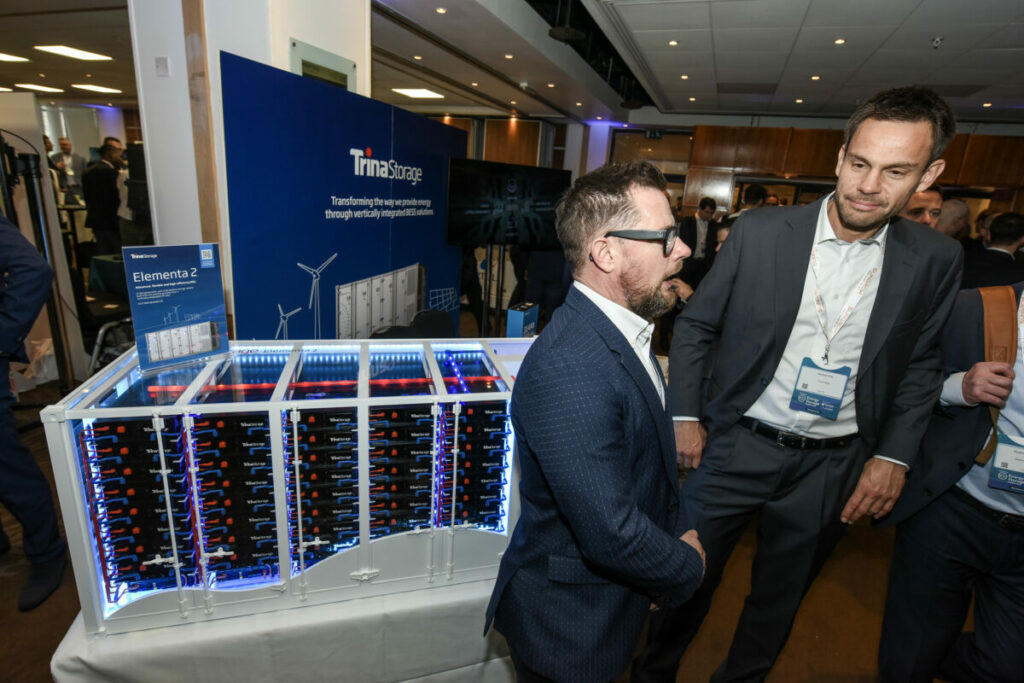
Energy-Storage.news Premium sits down with Helena Li, executive president at Trina Solar, to discuss the launch of Elementa 2, the group’s new integrated battery storage solution.
Trina Storage, the energy storage arm of the global solar PV manufacturer, took the occasion of the Energy Storage Summit EU to launch Elementa 2.
Enjoy 12 months of exclusive analysis
- Regular insight and analysis of the industry’s biggest developments
- In-depth interviews with the industry’s leading figures
- Annual digital subscription to the PV Tech Power journal
- Discounts on Solar Media’s portfolio of events, in-person and virtual
The new battery energy storage system (BESS) solution comes with larger battery cells and packs just over 4MWh of capacity into a standard 20-foot container size.
That’s in line with an industry trend for higher energy density products. Another interesting aspect is that in the couple of years since its predecessor Elementa was launched, Trina’s in-house lithium iron phosphate (LFP) cell production has ramped up and will power the new product in most geographies.
While Elementa 2 was previewed to the market late last year at RE+ in the US and All Energy Australia, Trina Storage’s choice of a show in Europe – and more specifically the UK – to make the official launch was strategic, Helena Li says.
Just a couple of weeks ahead of the show, Trina Storage inked a deal with UK developer Low Carbon for two 95MW, 2-hour duration systems (190MWh).
UK experiences pave way for overseas push
Trina Storage was launched at the 2021 edition of the Summit, hosted by our publisher Solar Media, while completion of the first project to use Elementa, in Cambridgeshire in England, was unveiled at the following year’s show. Li says the UK is the market from which Trina believes its energy storage business will “flourish,” being the Chinese company’s key overseas market to date for BESS.
More than 4GWh+ of Elementa systems have been shipped so far, and while the majority are in China, around a gigawatt-hour is in the UK. On top of that, the company has served as system integrator on those UK projects.
That means the company has learned a lot about the market and how to deliver BESS solutions into it, while giving Trina’s teams a lot of expertise on “overall system performance and the overall equipment side”.
Those learnings from the UK will enable the transfer of some of that know-how over to new markets, Li claims. In Q4 last year Trina Storage signed its first US project contract, as well as a Memorandum of Understanding (MoU) in Japan and another in the Middle East.
Cell division
The in-house LFP cells will go to all Elementa 2 projects as standard, although there will be cases where the contracts were written up prior to the cells being available, and if so defined by the customer’s design, third-party cells could be used.
Even in many of those cases, Trina is finding that customers are happy to talk about using the Trina cell. Li claims those discussions are helped along by the product warranties and guarantee terms, as well as customer knowledge of the parent company’s long track record in solar PV, including manufacturing at scale.
For the overseas market, Elementa 2 comes with Trina’s 306Ah cells as standard, in China it’s a 314Ah cell – although overseas customers do have the choice of the slightly larger cell, should they wish.
Different customers in different markets have different requirements and preferences when it comes to the total system solution, too. So while Trina Storage acts as system integrator from end-to-end in the UK, US customers, typically large independent power producers (IPPs) and utilities, want to buy BESS products at rack and pack level, and then put the batteries in containers and cabinets themselves, Li says.
In continental European markets like Germany, Spain or Italy meanwhile, customers want their technology provider to also integrate systems on the first couple of projects, to gain know-how and expertise, much like Trina itself has done.
Quality control in mass manufacturing
Having an in-house developed and manufactured cell enables “quality control of everything” that goes into an Elementa 2, Helena Li said.
That includes control over the supply chain, which is obviously important given the last couple of years of industry uncertainty over lithium battery supply.
More important than that however is that the company is able to deliver to the customer a product that meets their needs.
“We want to ensure every component, every step, is controlled by us as much as possible. Especially for the storage sector, because safety and also performance is more probably more critical [and with precise requirements] than on the PV side.”
Mass production of Trina’s LFP cells began in 2023. The company already had its own cell technology in R&D from a long time before that, following analysis of the market and the competition the company would face. In-house testing facilities were also built very early on in the process.
The 280Ah cell was in mass production for around 18 months, helped along by some large orders from customers in China, before the higher energy density products were introduced.
As one of the world’s largest solar PV manufacturers – Trina Solar is one of the members of the elite Solar Module Super League (SMSL), a term coined by our colleagues at PV Tech – the company is experienced in what Helena Li calls “precise manufacturing process control” and optimisation of those processes.

